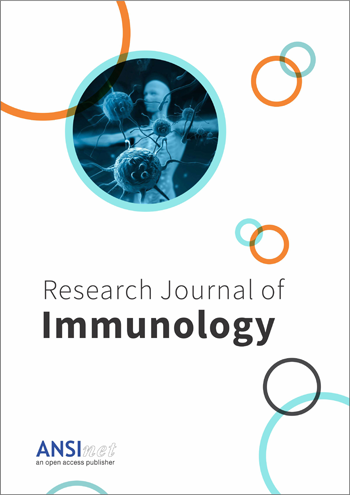Research Journal of Immunology
Research Journal of Immunology (RJI) is a newly launched peer-reviewed scientific journal dedicated to publish outstanding research findings on cellular and molecular immunology. Scope of the journal includes: Cellular immunology and immune irregulation, clinical immunology, host defense, immunogenetics, inflammation, molecular and structural immunology, antigen processing, cellular immune response, immunity to infection, immuno-modulation, molecular immunology, leukocyte signaling and clinical immunology.
Submit your best paper to RJI via online submission system.
